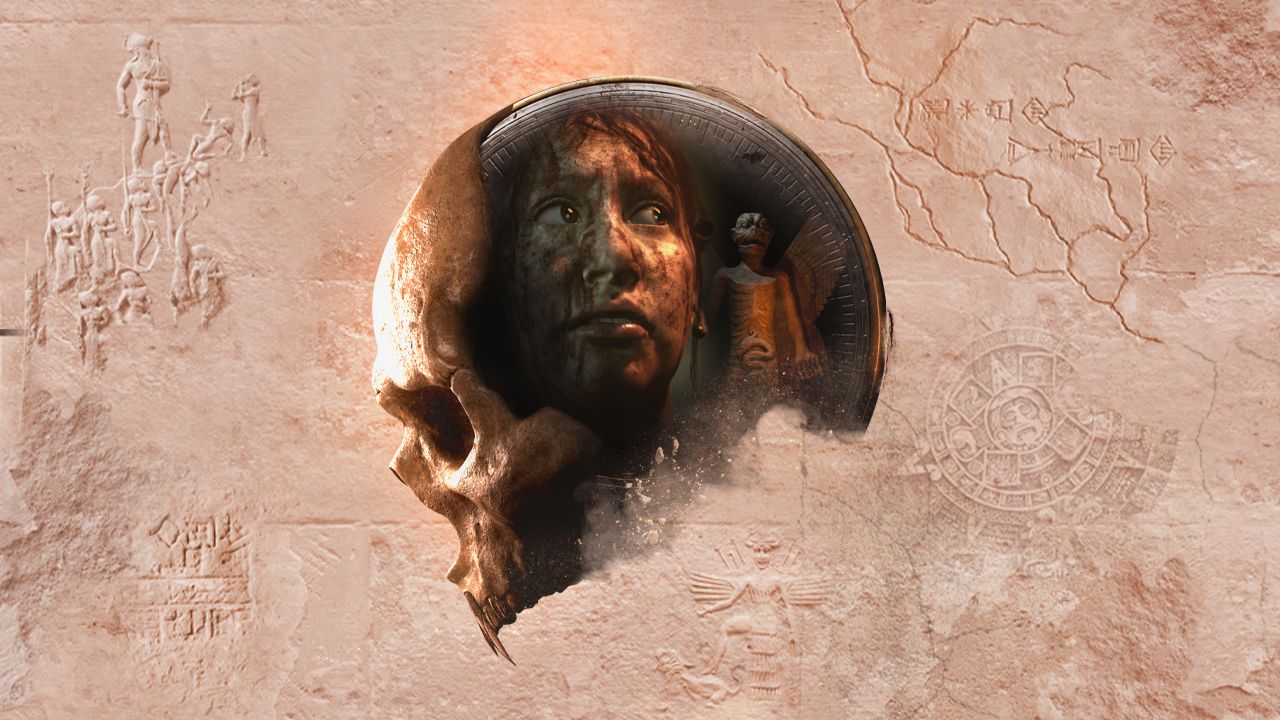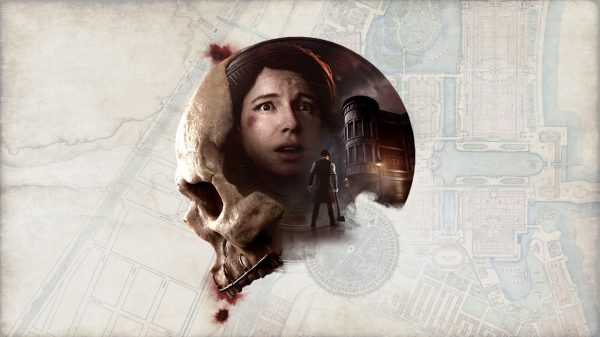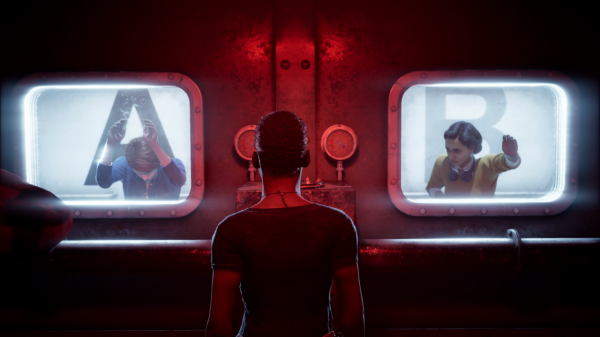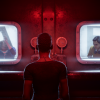The gap between video games and film is narrowing all the time, with more and more games embracing cinematic elements or experiences. One developer that is known for blurring the lines between the two mediums is Supermassive Games, developer of Until Dawn and The Dark Pictures Anthology, a five-part collection of interactive horror adventures that encourage players to write their own story based on the choices they make. So far, the series’ first two entries, Man of Medan and Little Hope haven’t delivered on the concept’s potential. However the third entry, House of Ashes, has shown promise in its pre-release showings, so much that it could be studio’s best work to date. So, does House of Ashes rise to the occasion or does it suffer the same fate?
One of the pulls of The Dark Pictures Anthology is its use of historical events and figures and myths as backdrops for each story’s premise. The foundation of House of Ashes’ narrative is rooted in the good old days of 2,250 BC, during the time of the Akkadian Empire. The empire was ruled by Naram-Sim, who according Sumerian legend upset the gods and as a result cursed his people. In House of Ashes, Naram-Sim builds a temple in order to appease the gods and break the curse, but it is not considered enough and the temple is buried underground after Akkad falls. It’s certainly a setting that plays to my interests and easily the most intriguing of the three entries to date.

The temple in its glory days
The game’s opening sequences give us a look at what happened during Naram-Sim’s final stand before jumping to the Middle East in 2003 during the Iraq War, where a specialised American taskforce comprised of members of the CIA (Rachel King – played by Ashley Tisdale), US Air Force (Eric King) and US Marines (Jason Kolcheck and Nick Kay) is on the hunt for weapons of mass destruction. Having identified what they believe is an underground bunker containing WMDs, the Americans head off to confirm their suspicions. Upon arrival, the Americans are ambushed by Allied Forces and come under fire, with both sides taking casualties. However, an earthquake erupts, sending Eric, Rachel, Jason, Nick and a collection of American and Iraqi soldiers (including the playable Salim Othman) to the depths of the buried temple below. It doesn’t take long for those stranded below to realise that they’re not alone, with an unknown threat lurking in the shadows, and with everyone’s life in your hands, it’s up to you to get them out alive. As the survivors regroup and try to understand what they’ve fallen into, they learn that others before them discovered the temple and its horrors during a failed expedition in 1945.
As someone who froths ancient history, Lovecraft and horror in general, Supermassive has nailed the atmosphere inside the temple, blending elements of all three to create foreboding yet absorbing environments. I loved walking around and taking in the grandeur of the temple but was also wary that I could be attacked at any moment.
If you’ve played any of Supermassive’s previous games you’ll know what to expect from the gameplay. All you’ll really be doing is exploring your surroundings and interacting with certain items that you find along the way, some of which will give players a glimpse into future events that could transpire, as well as a better understanding of what happened on the failed expedition years ago.
You’ll have to have your wits about you though, as a QTE could pop up at any moment, and if you fail too many it could prove costly. QTEs vary from your standard timed button push, to button mashing, to heartbeat monitors, and with the game’s military backdrop, there are several combat-flavoured ones too (aim the cursor and shoot/attack within a certain timeframe). I will admit that one too many times I failed QTEs by not paying enough attention, and one time it cost me one of the character’s lives. QTEs are an acquired taste these days, however I have always been a fan and they certainly create tense interactions here.
Another noticeable change is the way that QTEs are handled, with them now tied to the game’s difficulty settings. In previous games, the QTEs would show the buttons as they are on the controller (green triangle, red B etc.), however this time around on the game’s standard difficulty the QTEs are all the same colour. It adds another level of challenge to what was a fairly simple task in previous games, and yes, one of my deaths was a result of this.
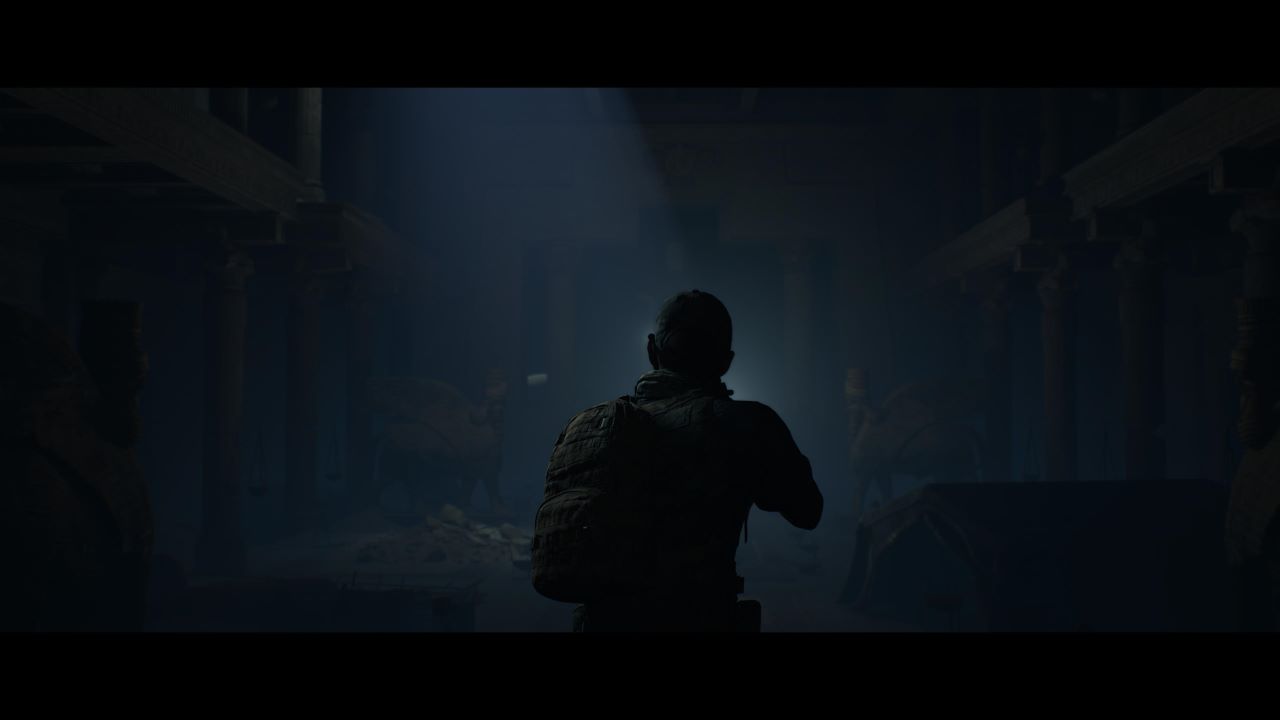
The atmosphere is excellent
Supermassive has also given players the option to tinker with the QTE settings to make them more accessible, such as disabling QTE timers, the ability to hold a button instead of button mashing it, and the ability to make QTEs the same button every time.
The other core mechanic is the game’s choice-based dialogue, which not only affects the story and the relationships between the characters but allows players to craft their own narrative. Do you want to be the arsehole Marine or do you realise that working together to survive is more important than the uniform someone is wearing? The choice is yours, and whatever choice you make there will be knock-on effects. You’ll be able to see all the choices you’ve made and the impacts they’ve had, as well as each character’s relationship with other characters in the game’s menu.
However, the biggest change in House of Ashes to its predecessors is the camera system, which no longer utilises fixed camera angles, but instead introduces a behind the shoulder viewpoint. In my preview earlier this year I said the change in camera systems was a game changer, and after rolling credits I can confirm that the camera change does wonders for the overall experience. Not only does it give the player more freedom to explore and take in what’s around them, but it enhances the immersion. A fixed camera system generally means that threats will come from a specific direction, whereas the over the shoulder system means that you are constantly watching…over your shoulder.
While The Dark Pictures do have basic gameplay mechanics, there’s always been a bigger focus on narrative, atmosphere and replayability. Preceding games in the series have primarily featured a cast of young adults, however House of Ashes utilises an older cast, which helps give the narrative a more mature tone, one that helps sell the seriousness of the situation a little better than previous titles.
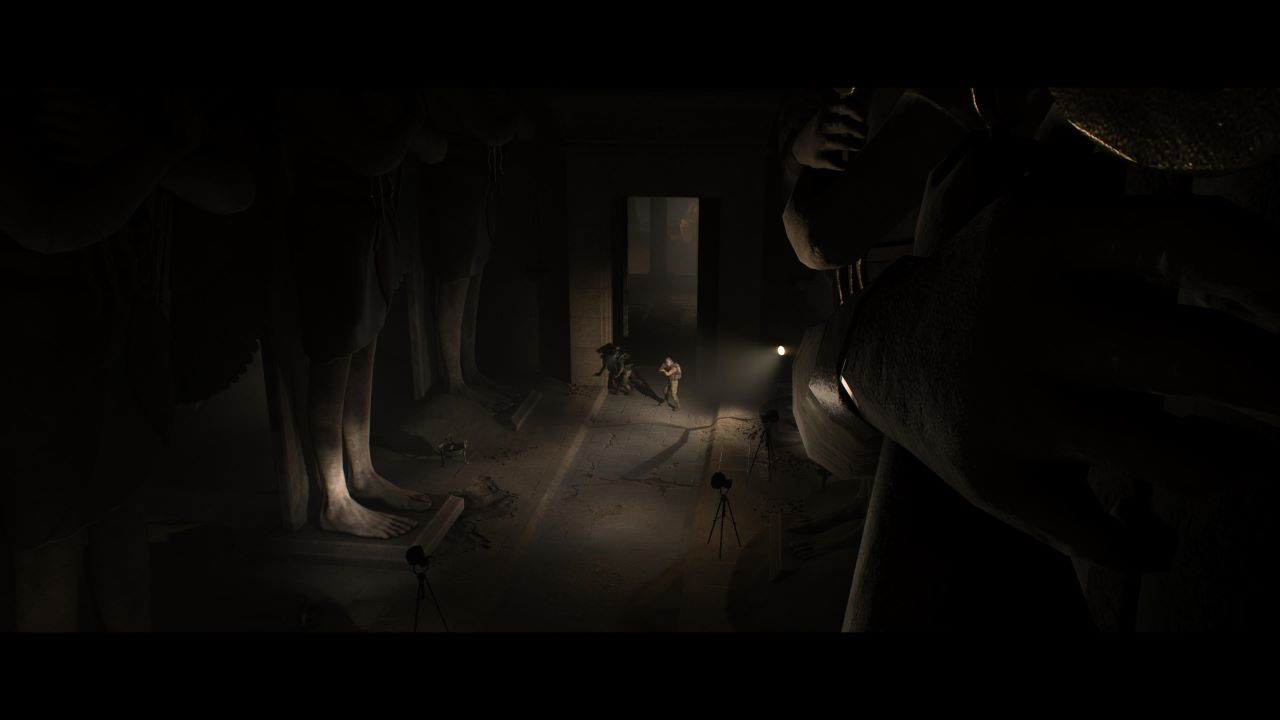
Always watch your surrondings
As someone who froths ancient history, Lovecraft and horror in general, Supermassive has nailed the atmosphere inside the temple, blending elements of all three to create foreboding yet absorbing environments
The cast is far from perfect though, with the Kings (Rachel and Eric) the weakest of the main, and the will-they-won’t-they-rekindle-their-marriage story arc largely misses the mark. Better is the bromance between Jason and Nick that is tested at times given the difference in rank and events that have transpired in the past that we learn about.
With four American soldiers there’s plenty of American bravado on display, with Kolcheck understandably patriotic to the very end, but whether that dictates his choices is up to you. In fact, at the beginning I wasn’t a fan of Kolcheck, but by the end of the game (spoiler alert: I didn’t kill him) I had come around, largely as a result of the choices I had made.
As the only non-American, Salim is by far the most interesting character, and given his underdog status and the humility he shows, it’s impossible not to root for him in every situation he’s in. There’s a scene in the game that Salim shares with another character who is reluctant to work with him purely because of his uniform despite their lives being in danger. However, Salim’s handling of this moment highlights how understanding and grounded he is compared to the rest of the cast.
Both Man of Medan and Little Hope suffered from pacing issues, dragging their feet at various points, and while House of Ashes isn’t flawless, it’s a significant improvement on its predecessors, despite some questionable writing at times. Another aspect of storytelling that Supermassive has failed to nail with previous Dark Pictures titles is the ending, and although House of Ashes’ twist should become obvious to most players before it’s revealed, the story has enough legs to hold itself to the end.
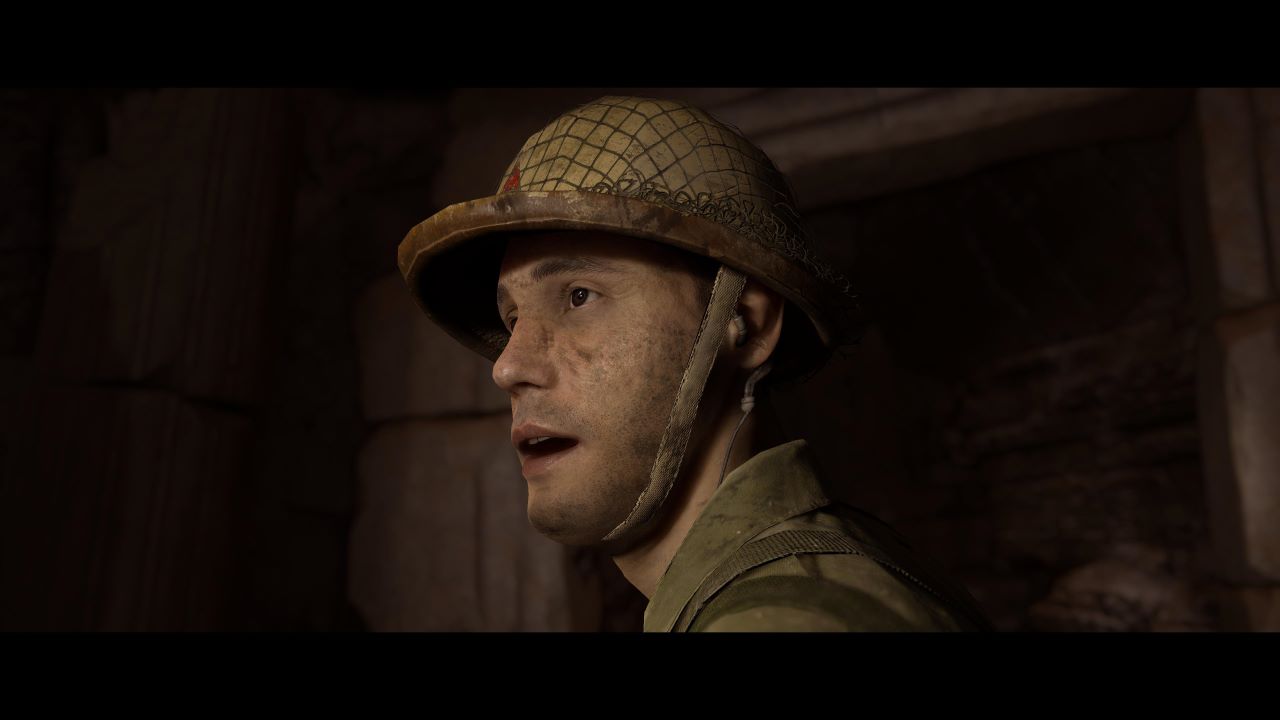
Salim is the star of the show
Of course though, replayability is king here, and with every player able to die or survive the journey depending on your choices there are several endings available, meaning two players could have two vastly different experiences. Couple that with the various ways to play the game (solo, co-op, Move Night) and the different versions of the game (Theatrical Cut or Curator’s Cut), there’s a ton of hours to be spent uncovering everything.
Not only is it the most immersive Dark Pictures entry from a gameplay and narrative perspective, it’s also the best looking one too, with the game benefitting from the extra power of the PS5 and Xbox Series X|S consoles, running at a native 4K on the PS5 and Xbox Series X (players have the option of choosing between Quality and Performance modes). Featuring raytracing, some of the game’s lighting is simply fantastic, and the level of detail in the temple’s structures is impressive. Although, the facial expressions do still look a little uncanny valley from time to time.
Final Thoughts
With each entry in The Dark Pictures Anthology, Supermassive improves and refines its cinematic horror formula, and House of Ashes represents the best spin on the formula so far, thanks to an intriguing historical backdrop and an enhanced gameplay experience. It doesn’t quite reach the heights of Until Dawn, but fans of Supermassive will find a lot to love and it makes me excited to see where the series goes next.
Reviewed on PS5 // Review code supplied by publisher
Click here for more information on WellPlayed’s review policy and ethics

- Supermassive Games
- Bandai Namco Entertainment
- PS5 / PS4 / Xbox Series X|S / Xbox One / PC
- September 22, 2021



Despite a childhood playing survival horrors, point and clicks and beat ’em ups, these days Zach tries to convince people that Homefront: The Revolution is a good game while pining for a sequel to The Order: 1886 and a live-action Treasure Planet film. Carlton, Burnley FC & SJ Sharks fan. Get around him on Twitter @tightinthejorts





